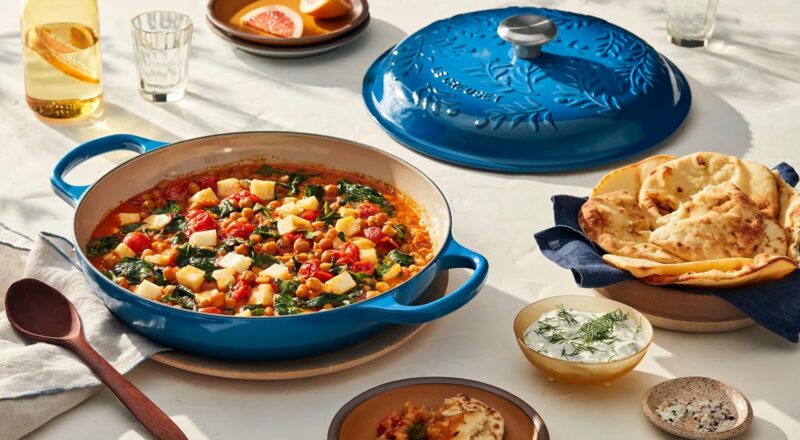When it comes to choosing the right cookware for your kitchen, the decision can be overwhelming. Two popular options among cooking enthusiasts are the cast iron braiser and the clay pot. Both have their unique benefits and drawbacks, making them suitable for different cooking styles. Understanding these differences can help you make an informed decision.

Introduction to Cast Iron Braiser
The cast iron braiser is a versatile piece of cookware known for its ability to evenly distribute heat. It is ideal for browning, searing, and slow-cooking meats and vegetables. Its sturdy construction allows it to withstand high temperatures, making it perfect for oven use.
Advantages of Cast Iron Braiser
One of the biggest advantages of the cast iron braiser is its durability. It can last for decades if properly maintained. Additionally, it is excellent for retaining heat, which ensures even cooking. You can learn more about its benefits here.
Disadvantages of Cast Iron Braiser
However, the cast iron braiser is quite heavy, which might be a drawback for some users. It also requires regular seasoning to maintain its non-stick surface. Explore more about its maintenance here.
Introduction to Clay Pot
The clay pot is a traditional cooking vessel known for its ability to enhance the flavors of food. It is particularly popular in Asian and Mediterranean cuisines. The porous nature of the clay allows moisture to circulate, keeping the food tender and flavorful.
Advantages of Clay Pot
Clay pots are known for their natural cooking properties. They impart a unique flavor to the food that is hard to replicate with other cookware. They are also eco-friendly and can be used directly on the flame or in the oven.
Disadvantages of Clay Pot
On the downside, clay pots are fragile and can crack if not handled carefully. They also require soaking before use to prevent cracking. Learn more about cooking with clay pots here.
Comparing Cast Iron Braiser and Clay Pot
Cooking Performance
Both the cast iron braiser and the clay pot have their strengths. The braiser is excellent for high-heat cooking and browning, while the clay pot excels in slow cooking and flavor enhancement.
Ease of Use
The cast iron braiser is easier to clean and maintain, while the clay pot requires more care. However, the clay pot’s lightweight nature makes it more user-friendly in terms of handling.
Versatility
In terms of versatility, the cast iron braiser can be used for a variety of cooking methods, including frying, sauting, and baking. The clay pot, while limited to specific dishes, offers a unique cooking experience.
Conclusion
In conclusion, both the cast iron braiser and the clay pot have their unique advantages and disadvantages. Your choice should depend on your cooking preferences and needs. If you value durability and versatility, the cast iron braiser might be the right choice. However, if you enjoy traditional cooking methods and enhanced flavors, the clay pot could be a better fit.

Frequently Asked Questions
What is the primary use of a cast iron braiser?
The primary use of a cast iron braiser is for browning, searing, and slow-cooking various dishes. It is known for its even heat distribution and retention.
Can I use a clay pot on an electric stove?
Yes, you can use a clay pot on an electric stove, but it is crucial to use a heat diffuser to prevent cracking due to direct heat.
How do I maintain a cast iron braiser?
Maintaining a cast iron braiser involves regular seasoning to keep its non-stick surface intact. After each use, clean it with warm water and dry it thoroughly.
This article contains affiliate links. We may earn a commission at no extra cost to you.

